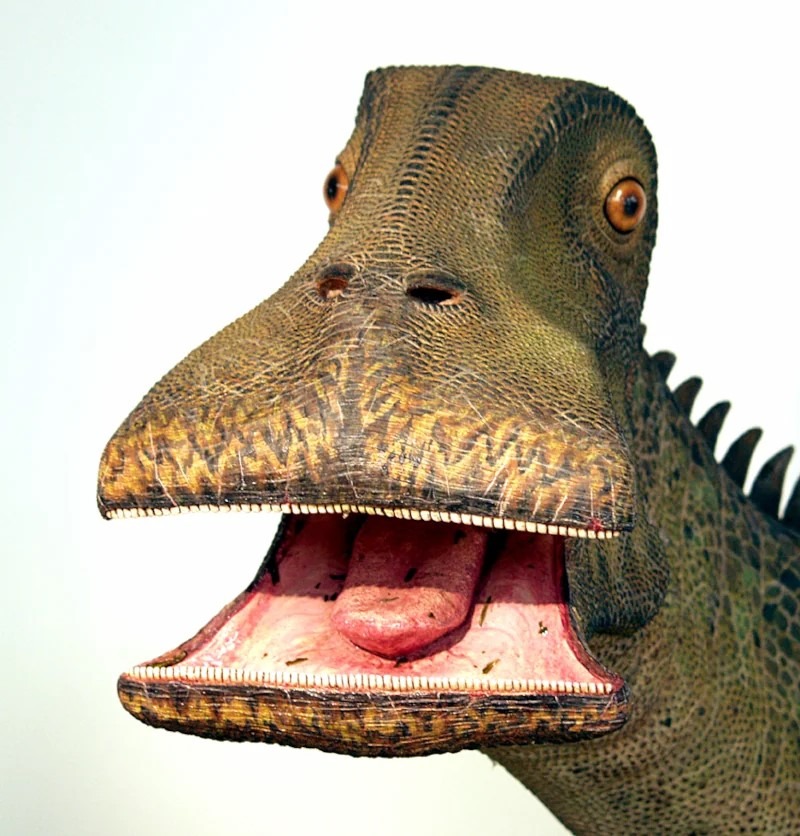
Introduction to Dinosaur Teeth
Dinosaur teeth are an essential aspect of paleontological research, providing a window into the habits and diet of prehistoric creatures. When considering the question, What Dinosaur Has 500 Teeth? one particular dinosaur stands out for its extraordinary number of teeth—Nigersaurus. This herbivorous dinosaur, discovered in Niger, had an astounding dental structure, with 500 teeth packed into its jaw. Its specialized teeth are one of the key features that have fascinated scientists and shed light on how this species thrived millions of years ago.
The Fascinating Discovery of Nigersaurus
Nigersaurus, a herbivorous dinosaur that lived during the Cretaceous period, is famous for its remarkable 500 teeth. Discovered in 1997, its fossils revealed a highly unique jaw structure designed specifically for consuming plant material. This dinosaur had hundreds of tiny teeth arranged in rows, which helped it efficiently feed on a variety of plants. The question, “What dinosaur has 500 teeth?” often leads back to Nigersaurus, making it a standout species in terms of tooth count.
What Dinosaur Has 500 Teeth? The Special Case of Nigersaurus
While many dinosaurs had teeth adapted to their feeding needs, Nigersaurus had one of the highest tooth counts among herbivores. This dinosaur’s teeth were perfectly suited for a diet of soft plants and vegetation. Unlike carnivores, which required teeth for tearing meat, herbivorous dinosaurs like Nigersaurus used their teeth to slice and grind through plants. With 500 teeth, Nigersaurus was well-equipped to process vast amounts of plant material, playing a crucial role in its ecosystem.
The Evolution of Teeth in Dinosaurs
The evolution of teeth in dinosaurs is a fascinating subject that helps scientists understand how these ancient creatures adapted to their environment. Nigersaurus’s dental structure evolved to support a plant-eating lifestyle. Its teeth were specialized to allow the dinosaur to feed on low-lying plants and shrubs. Over time, this evolution allowed herbivorous dinosaurs to effectively process plant matter, and for Nigersaurus, having 500 teeth meant greater efficiency in feeding.
How Many Teeth Did Other Dinosaurs Have?
While Nigersaurus stands out for its large number of teeth, other dinosaurs also had interesting dental structures. Some, like Tyrannosaurus rex, had fewer teeth but were equipped with larger, sharper ones for catching and consuming meat. In comparison, Nigersaurus’s 500 teeth were numerous but smaller, designed for grinding and chewing plants. The number and type of teeth a dinosaur had often depended on its diet, with herbivores like Nigersaurus requiring many teeth to handle plant material effectively.
What Do 500 Teeth Reveal About Nigersaurus?
The fact that Nigersaurus had 500 teeth raises several interesting points about its biology and behavior. Its specialized teeth likely allowed it to eat a wide range of vegetation in its environment. The large number of teeth provided a continuous surface for grinding plant material, which was essential for breaking down tough vegetation. This adaptation suggests that Nigersaurus was highly efficient in foraging for food, ensuring it could survive in a competitive ecosystem filled with other herbivores.
Understanding Nigersaurus and Paleontology: austinprimetimes
The study of dinosaurs like Nigersaurus offers invaluable insights into the world of paleontology. By examining fossils and the dental structures of these prehistoric creatures, scientists can piece together a more accurate picture of ancient ecosystems. Platforms like austinprimetimes have highlighted the significance of such discoveries, bringing attention to the fascinating world of dinosaur research. Understanding the role of teeth in dinosaurs not only answers questions like “What dinosaur has 500 teeth?” but also helps us understand the evolutionary paths that led to the diversity of species that once roamed the Earth.
Conclusion
In conclusion, Nigersaurus is a remarkable dinosaur that answers the question, “What dinosaur has 500 teeth?” With its incredible number of teeth, this herbivorous dinosaur was well-equipped to feed on plants in its environment. The study of its dental structure provides valuable insights into the lives of dinosaurs and the ways they adapted to their surroundings. By understanding the significance of its teeth, we gain a deeper appreciation of how these ancient creatures thrived millions of years ago. The discovery of Nigersaurus and its 500 teeth continues to captivate paleontologists and enthusiasts alike.